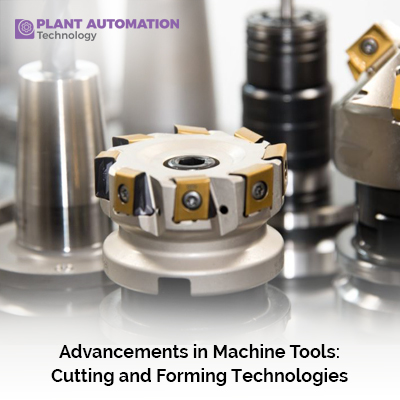Advancements in Machine Tools: Cutting and Forming Technologies

Introduction:
Machine tools play a pivotal role in the manufacturing industry, enabling the production of precision components and intricate parts used in various sectors. Among the diverse range of machine tools, cutting and forming processes stand out as fundamental techniques in shaping raw materials into finished products. In this article, we delve into the advancements and innovations within the realm of cutting and forming machine tools, exploring how these technologies contribute to increased efficiency, precision, and versatility in modern manufacturing.
I. Cutting Technologies:
Traditional Cutting Methods: Traditional cutting methods, such as turning, milling, and drilling, have long been the backbone of machining processes. These techniques involve removing material from a workpiece to achieve the desired shape or size. While effective, these methods have seen significant advancements in terms of speed, accuracy, and automation.
CNC Machining: Computer Numerical Control (CNC) machining has revolutionized cutting processes. CNC machines are programmed to execute precise movements, enabling intricate designs and complex geometries. The integration of CNC technology enhances repeatability and reduces human error, resulting in higher quality and more consistent products.
Laser Cutting: Laser cutting has gained prominence for its ability to cut through a wide range of materials with exceptional precision. Utilizing a focused laser beam, this technology is especially valuable for intricate and delicate cuts. Laser cutting is widely used in industries such as aerospace, automotive, and electronics due to its versatility and minimal material wastage.
Waterjet Cutting: Waterjet cutting utilizes a high-pressure stream of water mixed with abrasive particles to cut through materials. This method is particularly useful for materials that may be sensitive to heat, as waterjet cutting produces minimal thermal stress. It is commonly employed in industries where precision and minimal material distortion are critical.
Plasma Cutting: Plasma cutting involves the use of ionized gas to melt and remove material from a workpiece. This method is well-suited for cutting thick metals and is often used in fabrication, construction, and automotive industries. Recent advancements in plasma cutting technology have improved efficiency and cut quality.
Ultrasonic Machining: Ultrasonic machining utilizes ultrasonic vibrations to remove material from a workpiece. This non-traditional cutting method is advantageous for hard and brittle materials, offering high precision and minimal tool wear. Ultrasonic machining finds applications in the production of micro-sized components.
| Also Read: Precision in Action: Exploring Machine Tools for Metal Forming |
II. Forming Technologies:
Press Brake Technology: Press brakes are widely used for bending and forming sheet metal into various shapes. Modern press brake technology incorporates CNC controls, allowing for precise control over the bending process. This enhances accuracy, repeatability, and the ability to produce complex geometries.
Stamping and Punching: Stamping and punching are crucial forming processes used to create intricate shapes and patterns in sheet metal. High-speed stamping presses equipped with advanced tooling allow for rapid and precise forming, making these processes essential in mass production industries.
Hydroforming: Hydroforming involves using high-pressure fluid to shape metal into complex forms. This method is particularly advantageous for producing lightweight and structurally efficient components, making it popular in the aerospace and automotive industries.
Additive Manufacturing (3D Printing): While traditionally associated with prototyping, additive manufacturing has evolved to become a viable forming technology. 3D printing enables the layer-by-layer construction of complex geometries, offering flexibility in design and reducing material wastage. It has found applications in various industries, from healthcare to aerospace.
Incremental Sheet Forming: Incremental sheet forming is a versatile and flexible process for shaping sheet metal without the need for complex dies. It is suitable for small-scale production and prototyping, allowing for quick adjustments to the forming process.
Forging and Extrusion: Forging and extrusion are traditional forming methods that remain essential in the production of components requiring high strength and durability. These processes involve shaping materials through compression or extrusion, enhancing the mechanical properties of the final product.
III. Integration of Industry 4.0:
The Fourth Industrial Revolution, often referred to as Industry 4.0, has brought about a paradigm shift in manufacturing. The integration of cutting-edge technologies such as the Internet of Things (IoT), artificial intelligence (AI), and big data analytics has significantly impacted machine tools in cutting and forming processes.
Smart Manufacturing: Smart manufacturing involves the use of sensors and connectivity to gather real-time data from machine tools. This data is then analyzed to optimize processes, predict maintenance needs, and enhance overall efficiency. In cutting and forming, smart manufacturing contributes to improved precision, reduced downtime, and better resource utilization.
Digital Twin Technology: Digital twin technology creates a virtual replica of physical machines, allowing manufacturers to simulate and analyze processes before actual production. This reduces the risk of errors and aids in optimizing cutting and forming operations for maximum efficiency.
Machine Learning and AI: Machine learning algorithms and AI systems are increasingly being applied to machine tools. These technologies enable adaptive machining, where the machine can adjust cutting parameters in real-time based on the material properties, tool wear, and other variables. This results in optimized performance and extended tool life.
Remote Monitoring and Control: Remote monitoring and control capabilities allow manufacturers to oversee and manage machine tools from anywhere in the world. This is especially beneficial for global supply chains, enabling real-time adjustments and troubleshooting, ultimately improving production agility.
Conclusion:
As the manufacturing landscape continues to evolve, cutting and forming technologies play a pivotal role in shaping the future of production. From traditional methods to cutting-edge technologies, the advancements discussed in this article highlight the continuous drive for increased efficiency, precision, and adaptability in machine tools. The integration of Industry 4.0 principles further accelerates these developments, paving the way for a new era of smart and interconnected manufacturing processes. As we look ahead, the synergy between innovative machine tools and digital technologies promises a more sustainable, agile, and responsive manufacturing industry.







